How to Disable ‘End Process’ in Edge’s Task Manager
The new Microsoft Edge is based on Chromium and users can install Chrome extensions from the Chrome Web Store. Extensions are used for different purposes depending on the type of extension. As helpful as these extensions are, they can also slow down things for the browser. Microsoft Edge has a Task Manager that is pretty much similar to the Windows Task Manager. Users can view and end the process in the browser Task Manager. However, some organizations can disable this feature from their employees to keep running extensions or services in Microsoft Edge. Users can still view the process, but the End Process button will not work anymore.

In this article, we are going to show you methods through which you can simply disable the process ending feature in Microsoft Edge. We have also included the Registry Editor method for the Windows Home users who do not have access to the Group Policy Editor.
Method 1: Using the Registry Editor
The Windows Registry can be used to modify the different settings for the Microsoft Edge. The users just have to understand the use of keys, values, and value data when working with the Registry. You need to create the missing key and value for disabling the ending process through the browser Task Manager. The Registry Editor method can be used in all Windows 10 editions. It doesn’t require any extra files to be downloaded for it to work. Follow the below steps carefully and you can also create a backup before making any new changes.
Note: You can configure this setting in the Current Computer or Current User. Both of them will have a similar path but the hives will be different.
- Open a Run dialog box by pressing the Windows and R keys together on your keyboard. Here type “regedit” and press the Enter key to open the Registry Editor. If you get the UAC (User Account Control) prompt, then choose the Yes option.
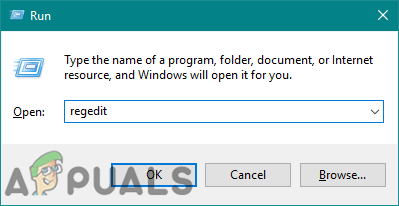
Opening the Registry Editor - You can also create a Registry backup before making any new changes. For that, click on the File menu in the menu bar and then choose the Export option in the list. Now provide the path where you want to save it and name the file. Lastly, click on the Save button to complete the backup.
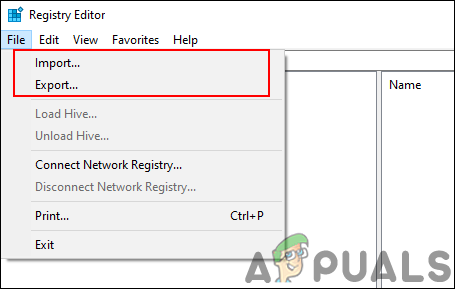
Creating the registry backup Note: To recover a backup, you can click on the File menu and choose the Import option. Then select the backup file that you previously created.
- In the Registry Editor window, go to the following location as shown:
HKEY_LOCAL_MACHINE\SOFTWARE\Policies\Microsoft\Edge
- If the Edge key is missing, you can create it by right-clicking on the available key and choosing the New > Key option. Then name the key as “Edge“.
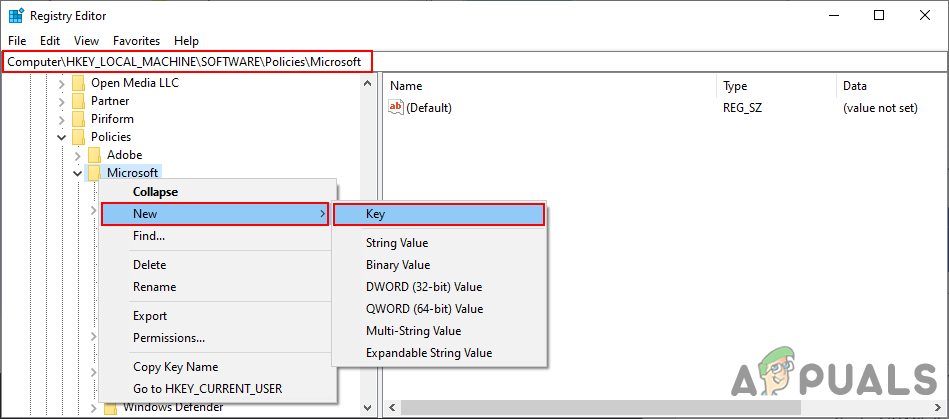
Creating the missing key - Now select the Edge key, right-click on the right pane and choose the New > DWORD (32-bit) Value option. Name the value as “TaskManagerEndProcessEnabled“.
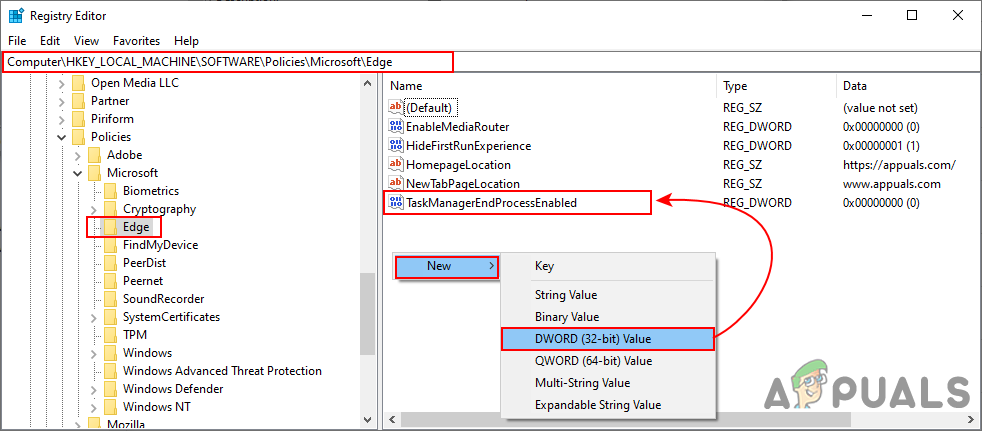
Creating a new value - Double-click on the TaskManagerEndProcessEnabled value and it will open a dialog box. Then you need to change the value data to 0 to disable the End Process button.
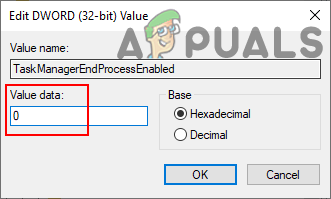
Changing the value data - Mostly this new change will be applied instantly to Microsoft Edge. If not, then you need to reboot the computer.
- You can always enable it back by changing the value data to 1 or by deleting the value from the Registry Editor.
Method 2: Using the Local Group Policy Editor
Another method is by using the policy setting in the Local Group Policy Editor. There is a specific setting that disables the ending process through the Task Manager in Microsoft Edge. However, the policy setting may not be found in your existing policy files. That is why you need to download the latest files from the Microsoft site as shown in the below steps. Then you just need to navigate to the setting in the Group Policy Editor and disable the policy setting.
Note: The setting can be applied in either Computer Configuration or User Configuration category. If you are using the Windows Home edition, then skip this method.
- First, open any browser and go to the Microsoft site. Then you need to select the version details of your Microsoft Edge and click on the GET POLICY FILES button.
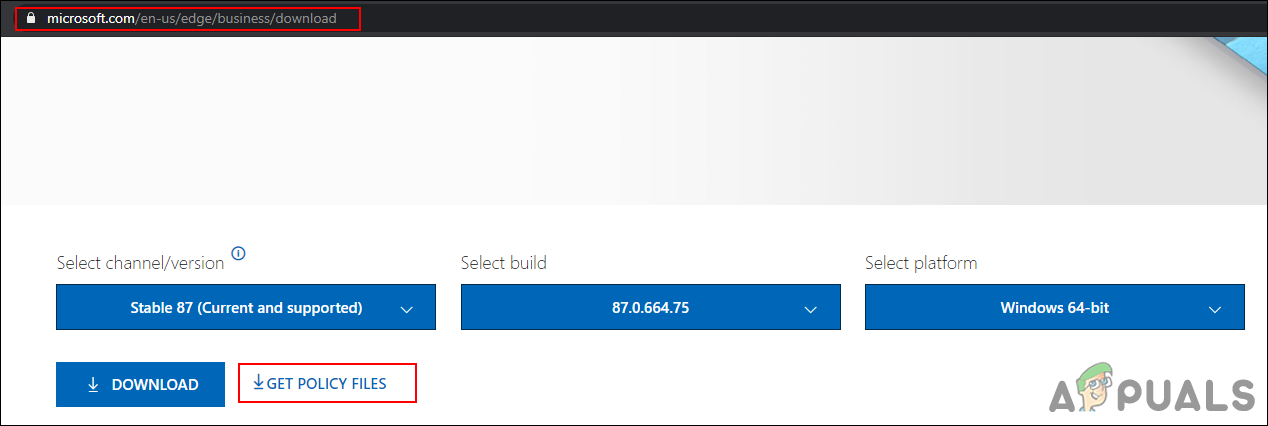
Downloading new policy files - Use the WinRAR application to extract the downloaded zip file as shown below.
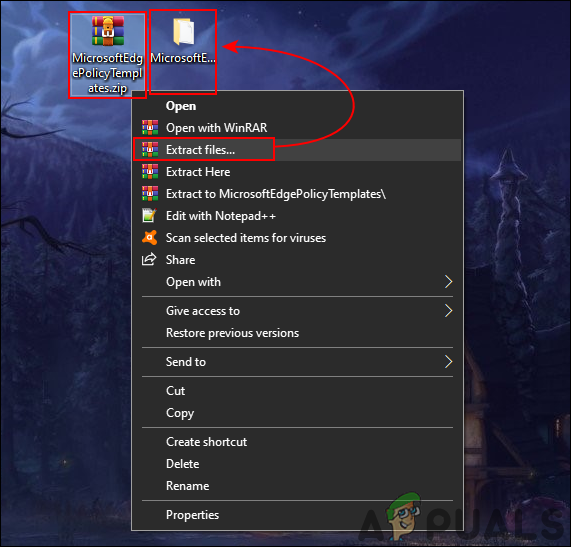
Extracting zip file - Open the extracted folder and navigate to the “MicrosoftEdgePolicyTemplates\windows\admx” path. Now copy the “msedge.admx” and “msedge.adml” files and then paste them into “C:\Windows\PolicyDefinitions” folder.
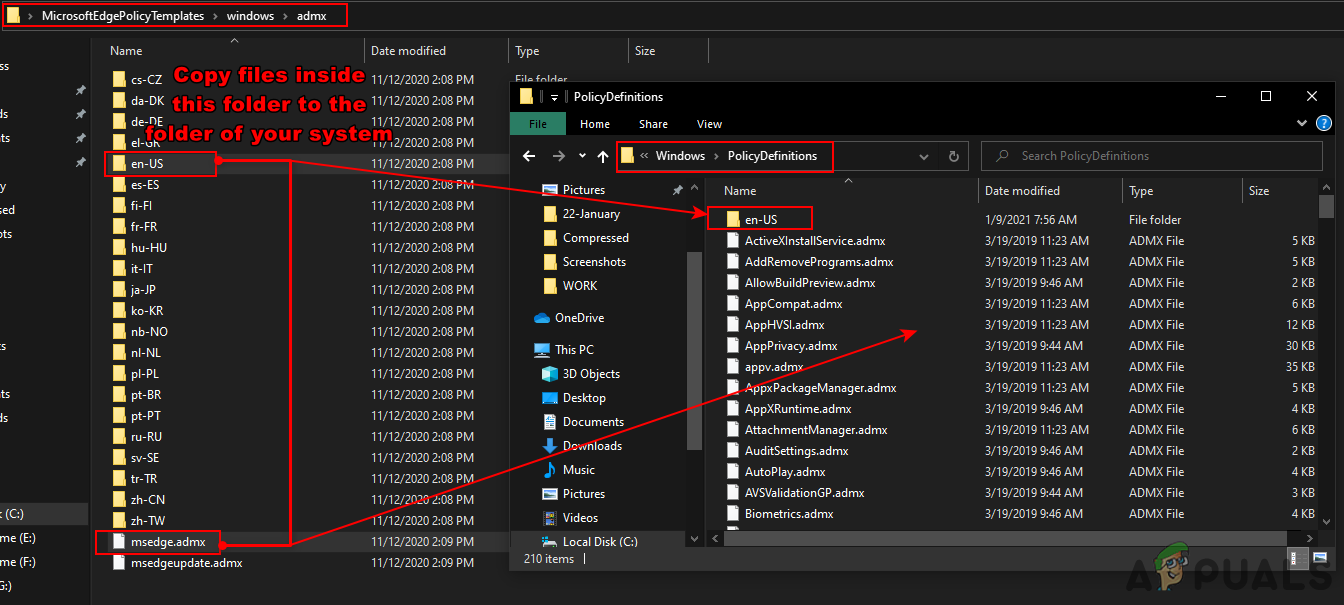
Copying files from one folder to another Note: The ADML file can be found in the language folder. Copy it from one language folder to another.
- Open the Run dialog box by pressing the Windows and R keys together on your keyboard. Now type “gpedit.msc” and press the Enter key to open the Local Group Policy Editor window.
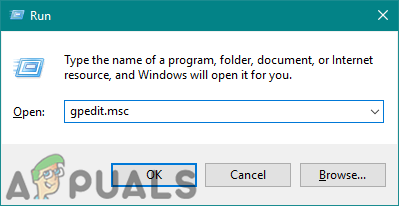
Opening the Group Policy Editor - Go to the following path in the Local Group Policy Editor window as shown:
Computer Configuration\ Administrative Templates\ Microsoft Edge\
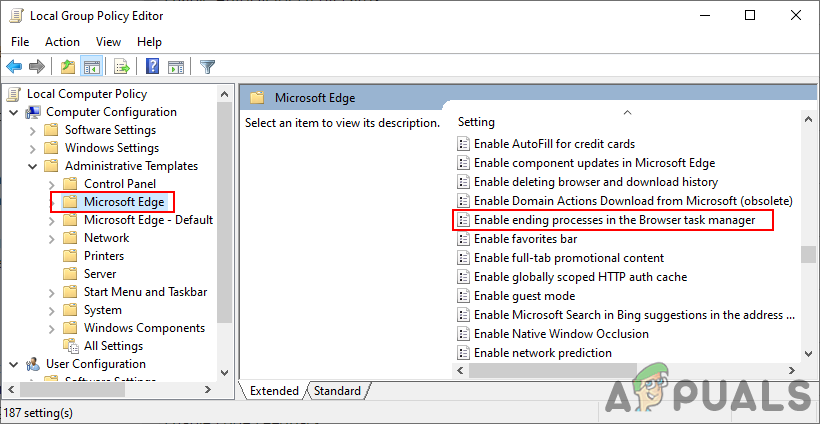
Navigating to the setting - Double-click on the setting named “Enable ending processes in the Browser task manager” and it will open in another window. Now change the toggle option from Not Configured to Disabled as shown.
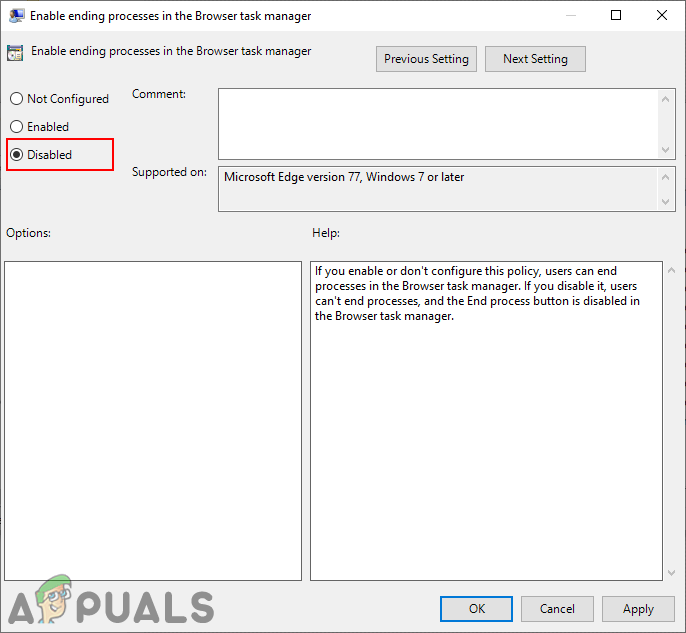
Disabling the End Process feature - Lastly, you can click on the Apply/Ok button to save the changes.
- You can always enable it back by changing the toggle option to Not Configured or Enabled in step 6.





